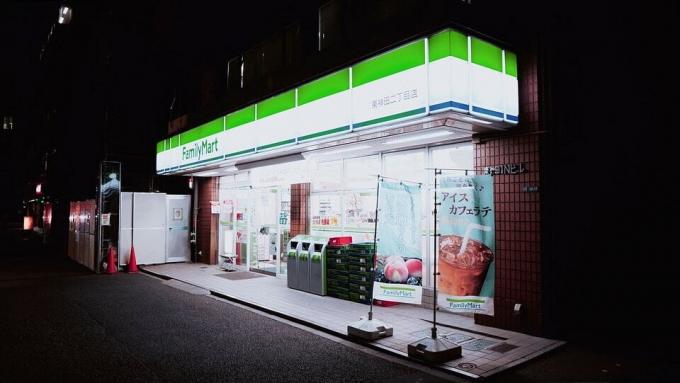In the past, a convenience store looked the same as others, 2,400 square feet of packaged consumer items. Today, companies in the industry are approaching markets with different types of stores and different product offerings.
There are mini-convenience stores under canopies, conventional-size stores with expanded food service, and even hypermarkets with a wide variety of product offerings and in-store seating for service food. The fastest growing segments of the convenience store market are considered by many to be "non-traditional" stores. That is, store formats other than 2,400 square feet, larger or smaller.
Advertisements
Changes in store formats have implications for all elements of the industry. Retail executives are concerned with competitive impact and their marketing strategies and niches. Product vendors want to be aware of format variations as they dictate the requirements for proper product packaging, promotion, and distribution for stores. Equipment and system vendors want to design their equipment and systems to accommodate different types of store formats.
Investors and financial analysts want to understand the economics of the changes that are taking place and the possible impact on the convenience store industry. Finally, the various government agencies (local, state, and federal) must understand the various store formats.
Advertisements

In this article you will find:
What is a convenience store?
A convenience store is a retail point of sale that sells a limited range of prepared and ready-to-eat foods, bottled and fountain beverages, household staples, tobacco products, and periodicals. Convenience stores are typically small in size, open extended hours, and at In most cases, they have a relatively small team of cashiers, warehouse workers, and managers
Advertisements
The idea of a convenience store is to complement any items that you have not bought in the store. Or maybe you're in between shopping trips and just need an item or two quickly.
Convenience stores are open for long hours and often only have one or two people working at a time. They are typically located near busy streets and highways that are easily accessible for… you guessed it… convenience.
Advertisements
They are also known as corner stores, corner stores, and warehouses in Spanish-speaking areas.
While such operational characteristics are not a required condition for membership, convenience stores have the following characteristics:
Advertisements
- While the size of the building can vary significantly, the size will typically be less than 5,000 square feet.
- Off-street parking and / or convenient pedestrian access.
- Extended hours of operation with many open 24 hours a day, seven days a week.
- Convenience stores stock at least 500 SKUs.
- The product mix includes food-type items and also items from the following groups: beverages, snacks (including confectionery), and tobacco.
origins
Originally starting at gas stations in the United States, convenience stores became unusually popular in high-density East Asian cities during the 1980s. In 1979, with the collaboration of the largest convenience store company in the US. In the US, Uni-President introduced 7-11 in Taiwan, starting the convenience store revolution.
Four years later, 7-11 had been successfully saturated in commercial and densely populated areas. It wasn't long after the stores began operating 24 hours a day. By 1986, a total of one hundred 7-11 were operating around the island.
Following in the footsteps of Uni-President, other corporations began to show interest in convenience stores. FamilyMart and OK-Mart opened their first stores in 1988 and Hi-Life in 1989. Since then, the business of these chain stores has multiplied. These days, it's perfectly normal for some people to walk into a convenience store at least once a day.
Based on this research, six formats were identified that represent trends in the convenience store industry today. The six formats of convenience stores are:
- Kiosk
- Mini convenience store
- Limited selection convenience store
- Traditional convenience store
- Expanded convenience store
- Hyper convenience store
Differences between a convenience store and a grocery store
The biggest difference between a grocery store and a convenience store is the type of food they sell.
Grocery stores have a wide variety and sell fresh produce, vegetables, meat, and basic items. They can also sell some household items. They are also bigger and the managers want you to hang out. They are generally cleaner and located near residential areas for convenience.
Convenience stores, on the other hand, have a limited variety. They can sell some everyday items like food and even some household items. You will not find any fresh produce. There will be no bakery, no flower department or fishmonger. They usually sell sandwiches, sodas, toilet paper, newspapers, and magazines. Convenience stores can be within service stations or independent stores. Prices at a convenience store are often higher than at a grocery store.
One of the The main reasons for the success of these convenience stores is their management structure. Workers and employees are trained to work efficiently. Because of this, stores could often operate with approximately three workers without sacrificing customer satisfaction.
Also, the food in these stores is mostly processed or precooked, which enables customers to fill an empty stomach quickly and inexpensively, benefiting people during business days.
Finally, convenience stores do a fantastic job of inserting themselves into people's daily lives. Each chosen item is perfectly tailored to the customer's demands. For example, companies adjust their orders based on seasons and temperature.


